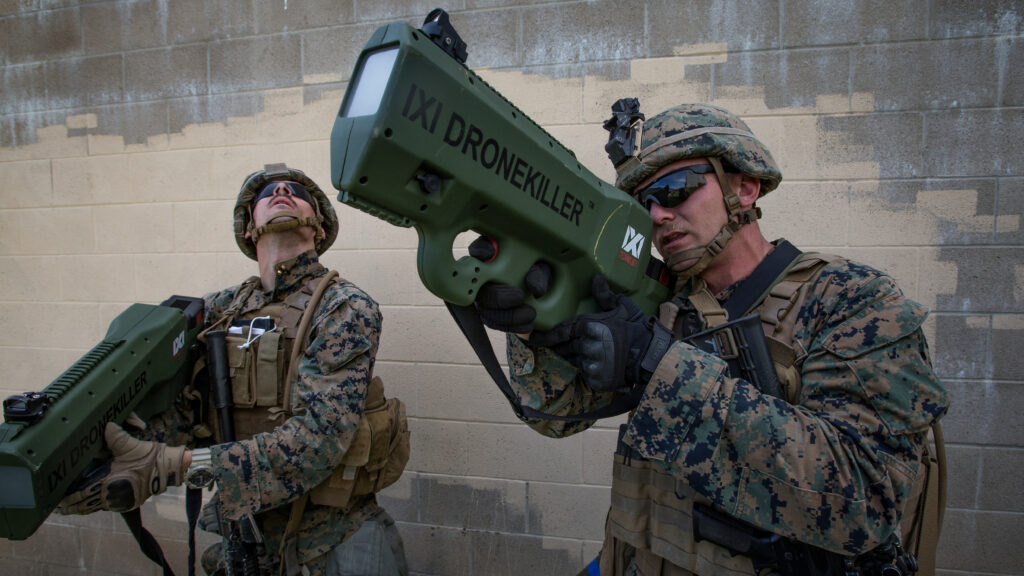This content discusses the revolutionary advancements in military technology that are reshaping modern warfare. The article explores several key innovations, including autonomous drones, hypersonic weapons, electromagnetic railguns, cyber warfare, and exoskeletons augmented reality. These advancements provide nations with significant advantages on the battlefield, increasing operational efficiency and effectiveness while reducing the risk to human lives. However, it is crucial for policymakers and military strategists to address the ethical and legal implications of these developments to ensure responsible and accountable use of these powerful technologies.
Revolutionary Advancements in Military Technology: A Look at the Latest Innovations
Introduction
In recent years, the world has witnessed remarkable advancements in military technology. From the development of autonomous drones to the use of artificial intelligence (AI) in combat systems, these innovations have revolutionized the way wars are fought and won. In this article, we will explore some of the latest groundbreaking developments in military technology that are reshaping the landscape of modern warfare.
1. Autonomous Drones
Unmanned aerial vehicles (UAVs), commonly known as drones, have become instrumental in military operations. However, the latest advancements in autonomous drones have taken their capabilities to a whole new level. These drones are equipped with sophisticated AI systems that enable them to navigate complex environments, identify targets, and make tactical decisions without human intervention. This not only reduces the risk to human lives but also enhances operational efficiency and effectiveness.
2. Hypersonic Weapons
Hypersonic weapons have garnered significant attention in recent years due to their extraordinary speed and maneuverability. These weapons can travel at speeds greater than Mach 5, making them extremely difficult to intercept or defend against. Hypersonic missiles, for example, can deliver devastating blows to enemy targets within minutes, drastically reducing response time for defensive systems. As a result, they are poised to reshape the dynamics of warfare by providing a significant advantage to the side possessing such capabilities.
3. Electromagnetic Railguns
Electromagnetic railguns present another revolutionary advancement in military technology. These weapons use electromagnetic forces to propel projectiles at hypersonic speeds over long distances. Unlike conventional guns that rely on chemical propellants, railguns use electricity, making them more efficient and cost-effective. With their enhanced range and destructive power, electromagnetic railguns can threaten enemy targets from afar, providing a significant advantage in both offensive and defensive operations.
4. Cyber Warfare
The digital age has brought with it a new battlefield: cyberspace. With increasing reliance on interconnected systems and networks, cyber warfare has become a critical aspect of modern conflict. Advances in offensive and defensive cyber capabilities have enabled nations to engage in cyber espionage, disrupt critical infrastructures, and disable enemy networks. The ability to exploit vulnerabilities in digital systems has made cyber warfare a potent weapon, capable of causing significant damage without direct military confrontation.
5. Exoskeletons and Augmented Reality
Advancements in exoskeleton technology and augmented reality (AR) are transforming the capabilities of individual soldiers on the battlefield. Exoskeletons provide enhanced strength, endurance, and protection, enabling soldiers to carry heavier loads and withstand extreme conditions. AR systems, on the other hand, provide soldiers with real-time information and situational awareness, integrating data from various sensors directly into their field of vision. These advancements not only enhance soldier performance but also reduce the cognitive load, allowing for quicker decision-making and precision.
Conclusion
The revolutionary advancements in military technology discussed above are reshaping the nature of warfare as we know it. From autonomous drones to hypersonic weapons and cyber warfare capabilities, these innovations provide nations with a significant advantage on the battlefield. As technology continues to evolve rapidly, it is imperative for policymakers and military strategists to adapt and leverage these advancements to maintain a competitive edge. However, it is equally important to address the ethical and legal implications associated with such developments to ensure responsible and accountable use of these powerful technologies.
